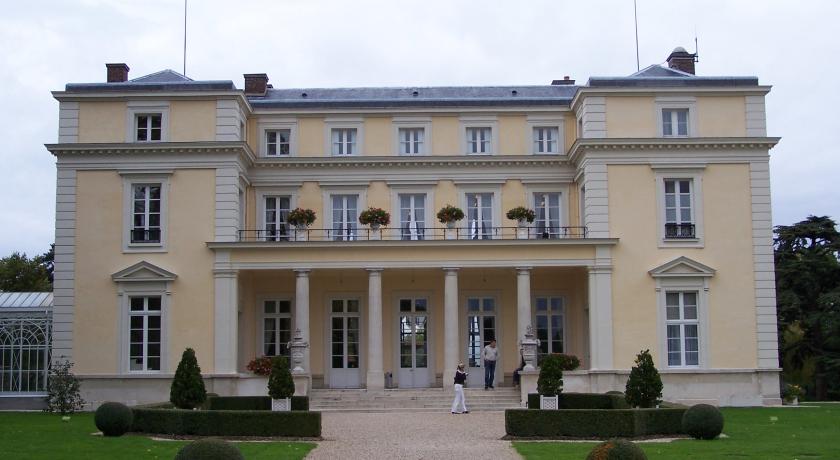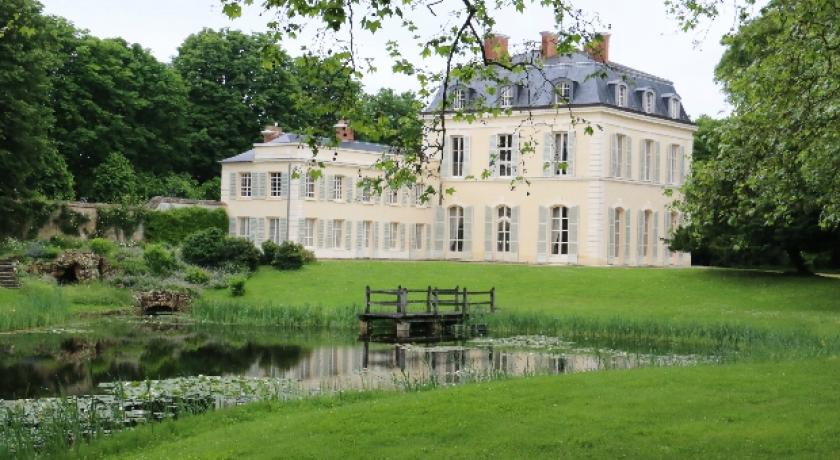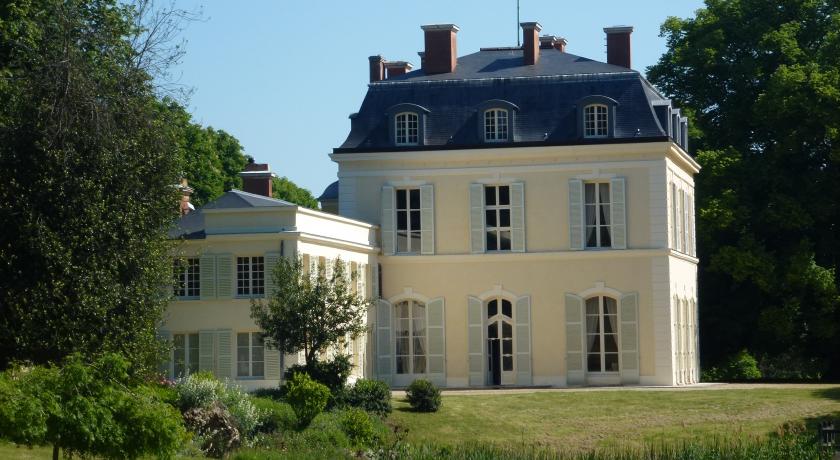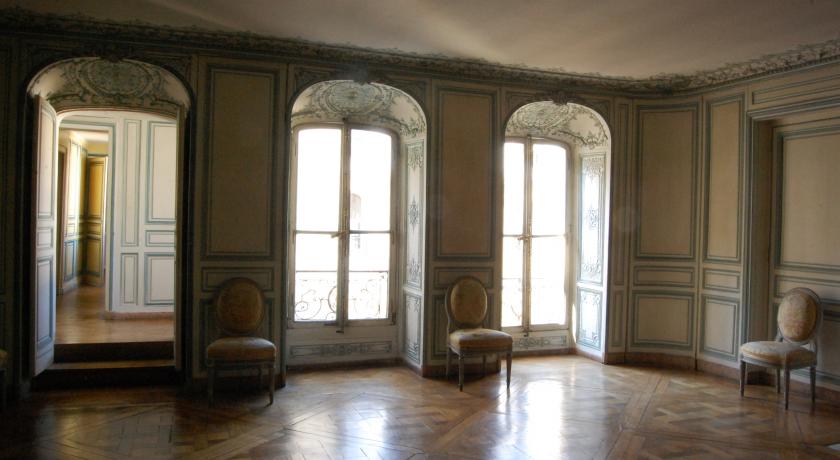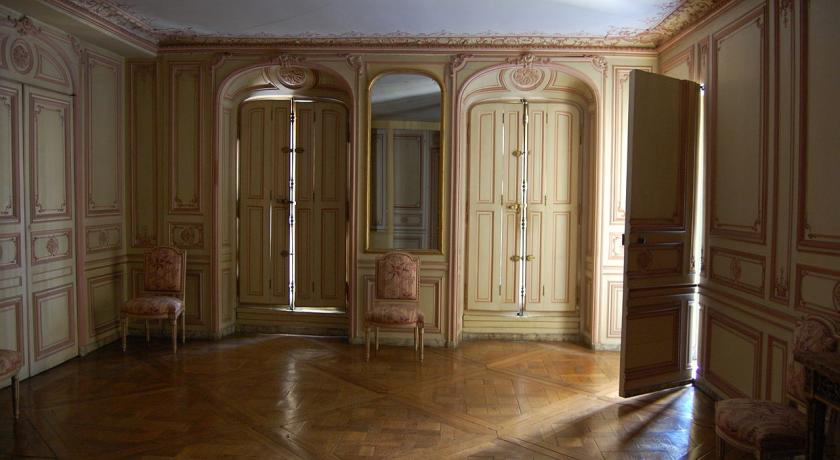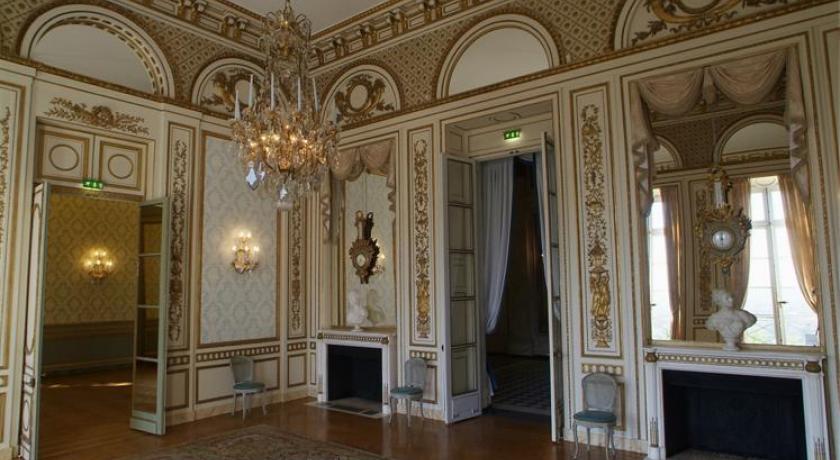Description
The castle of Madame du Barry in Louveciennes (Yvelines), includes:
• The castle itself, built at the end of the 17th century by Robert de Cotte, then expanded and redecorated probably by Ange-Jacques Gabriel for Madame du Barry.
• A Reception pavilion known as the music Pavilion constructed by Claude Nicolas Ledoux
• A park which was divided in the 19th century.
The old Castle, its Park, its factories and its sheepfold have being classified as Historical Monuments since December 26, 1994.
History
17th century
In 1683, Louis XIV ordered the construction, near the upper sump of the machine of Marly, inside the enclosure of the machine, a pavilion to serve as housing for Arnold Town, the promoter of this hydraulic installation.
The building is constructed by the young Robert de Cotte, future architect of the King, who began his career as a single contractor of the buildings of the King. Construction market, signed before a notary on the 4th of July 1683 between the Minister Jean-Baptiste Colbert and Cotte, provides that "will be made a Pavilion near the second puisart, eight square thoises applied to the retz-de-chaussée." Cotte is also responsible for building the reservoir of the upper sumps and the great tower of the Louveciennes aqueduct. The accounts of the Buildings of the King published by Jules Guiffrey specify that, for all his work in the machine, Robert de Cotte touches 93,590 livres 4 sols including at least 46,105 livres 2 sols for the single pavilion.
This Pavilion of Louveciennes is the first known work of Robert de Cotte.
From 1683 until his death in 1722, this pavilion was assigned as official residence at Arnold Town, as Governor of the machine of Marly, which furnishes the Pavilion with taste, organizing a cabinet of paintings with the works of Raphael, Holbein Van Dyck, Brown.
18th century
In 1769, Louis XV offered the castle to his new favorite, Madame du Barry, who resided there until 1793. It probably called upon Ange - Jacques Gabriel, first architect of the King, to expand and redecorate the building, which then joined the Eastern low wing, as well as a set of carved woodwork which remains in parts. In addition, for Madame du Barry, the castle had the disadvantage of not having a view of the Seine and do not have enough reception rooms. She entrusted to the architect Claude - Nicolas Ledoux building, in line with the Seine valley, of a pavilion which includes only reception rooms. This was the music pavilion.
The two small temples located in the Park, the Ionic temple date probably from this period. It is sometimes attributed without proof to Claude-Nicolas Ledoux or to Richard Mique.
19th century
In 1852, the field was expanded to the Seine, but divided into two lots:
• The first batch, including the castle was acquired by the banker Salomon Goldschmidt. In 1898, the heirs were built by the architect Henri Goury, Louis XV style, flanked by two pavilions, located No. 6 path of the Machine (No. 6 chemin de la Machine). The same architect also built stables.
• The second lot included Claude Nicolas Ledoux's music pavilion and two entrances.
The two small temples located in the Park, the Doric temple was built by Henri Goury at the end of the 19th century.
20th century
In the 1980s, the Castle, such as Millemont and Rosny-sur-Seine was acquired for commercial exploitation by a foreign couple, Kiiko Nakahara, and Jean-Paul Renoir (whose real name is Jean-Claude Perez-Vanneste), through a Japanese company of Mrs. Nakahara Father, Mr. Hideki Yokoi, called Nippon then KK (日本産業). The couple dispersed all the furniture, and left the residence, bought 30 million francs, abandoned. Squatted, the Castle undergoes various degradations and, in 1994, an attempt to remove woodwork and a chimney was barely defeated by the police. The Japanese owner then handed the property up for sale. It was bought by a French investor who has carefully restored it. Kiiko Nakahara and Jean-Paul Renoir were indicted in September 1992, and Ms. Nakahara imprisoned from January to December 1996, release on bail for four million francs. Her husband, arrested in November 1997 in Washington, was extradited and jailed in France until June 2000 and put on provisional release.
After ten years of instruction, the 'Japanese castles' case ended on dismissed. The thesis of malfeasance eventually crumbles. Kiiko Nakahara maneuvers were aimed at a single goal: to protect the inheritance of his father, who then had trouble with his creditors.
Description
The Park
The Park has experienced several changes: after creating several pavilions, in 1769, the countess du Barry turns it into an English Garden, in 1781; In the 19th century, Pierre Lafitte also performs work.
Source: https://fr.wikipedia.org/wiki/Ch%C3%A2teau_de_Madame_du_Barry_(Louveciennes)
Address
Louveciennes
France
Lat: 48.866817474 - Lng: 2.118743896


